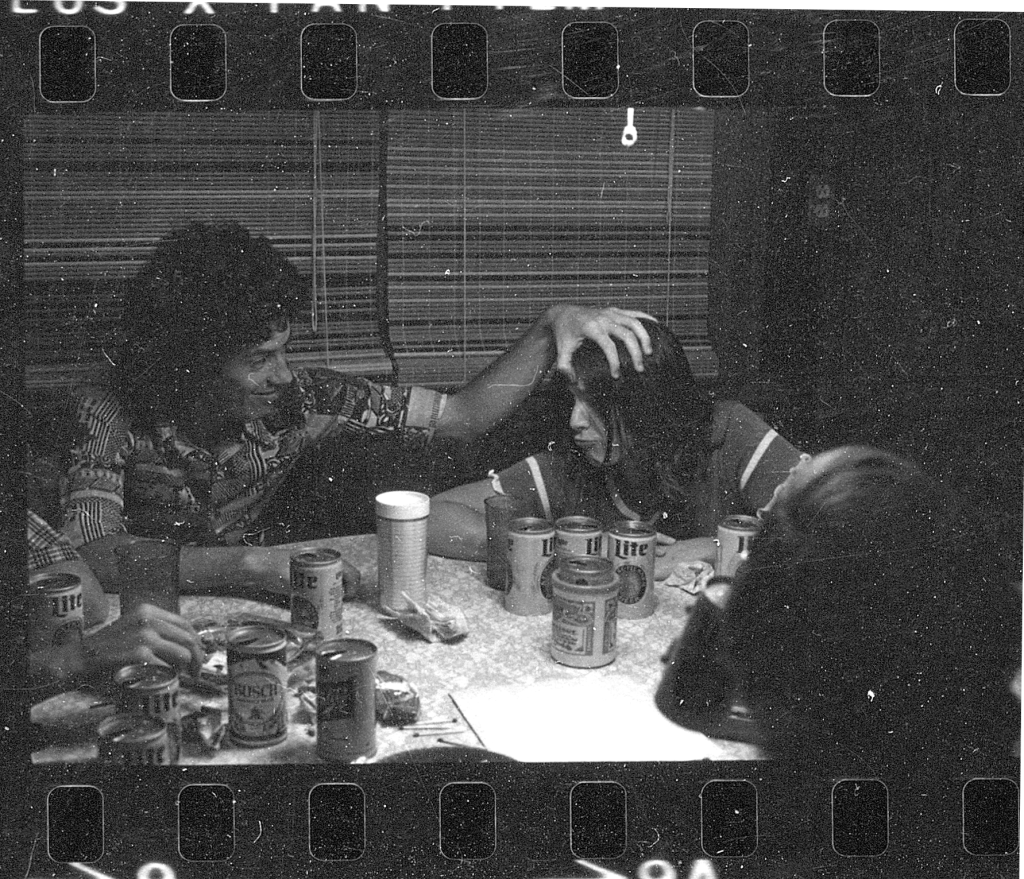
This photo was way under exposed on the contact sheet and I’ve tried to salvage. Not sure what was going on here except two young people very much in love.


This photo was way under exposed on the contact sheet and I’ve tried to salvage. Not sure what was going on here except two young people very much in love.
The images below were scanned from an old (1973-74?) contact sheet. Pretty sure the photos were were taken by Larry Thomason at one of the frequent poker nights he held in a small house (think “man cave”) in his parent’s back yard. Larry printed a few shots from this particular night but most of these never made it off the contact sheet. I’ve left them in that format because 1) I like it and 2) it was Larry’s call as to what he wanted to print and he’s gone now and I can’t ask him.
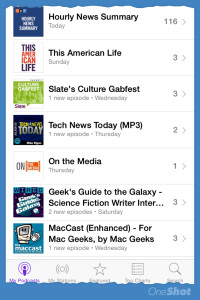 Been thinking some more about broadcasters lobbying for mobile carriers to turn on the FM receiver chip in phones. Never gonna work. Radio dial just too small. A little back-story:
Been thinking some more about broadcasters lobbying for mobile carriers to turn on the FM receiver chip in phones. Never gonna work. Radio dial just too small. A little back-story:
Since getting my first iPhone several years ago, I’ve always listened to music with earbuds when in the car. The 4Runner didn’t have a good way to interface and I just never bothered when I got the MINI. Apple Music has me listening more these days so I purchased an aux cable to play iPhone music through the MINI speakers.
Lo and behold! The MINI has really good speakers. Way better experience than the earbuds. (Yes, everybody told me that) Anyway, back to the radio dial…
With the unlimited data plan (ATT) on my phone, I can listen to (almost) all the music there is. And the playlists. And the customized “stations”… as well as the half-dozen podcasts I follow.
“Hey, Siri. Podcast. Tech News Today.” Voila!
No radio station can match this. ALL the radio stations can’t match this.

While getting my car serviced (at the MINI dealership in St. Louis) earlier this week I mentioned the Takata airbag recall and the young man at the part window got puzzled look on his face.
“You’ve heard about the exploding airbag canisters and the big recall, right?
Nope, he insisted. He hadn’t heard about any airbag recall. About that time another young man came up to the next part window so I asked him. Same response. Had no idea what I was referring to.
I’m certain they weren’t fucking with me. Somehow they had missed seeing/hearing/reading _anything_ about this long-running story. I find that amazing.
Unless I’m missing something here, this means these two men could not have watched a network or cable newscast, read a newspaper, or spent 2 minutes on an online news site for the past 6 months (longer?).
How is that possible? And what else is going on in the world about which these young men are oblivious? I assume they’re on Facebook and would have seem some reference to this story there. No?
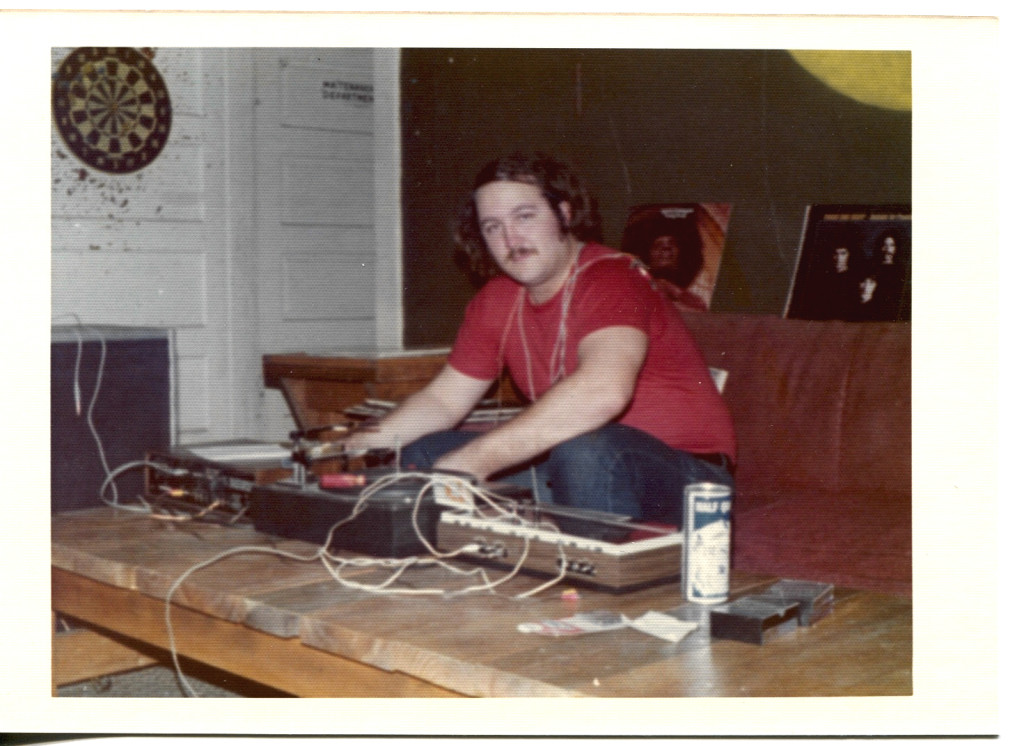
Want to take your music with you? Then you’re gonna have to work for it. This is Charlie making a mix-tape back in 1974. Amp on the left. Turntable in the middle. Two-deck cassette recorder on the right. When the cassette if full, there was a “high speed” dubbing mode so you could crank out extras for friends.
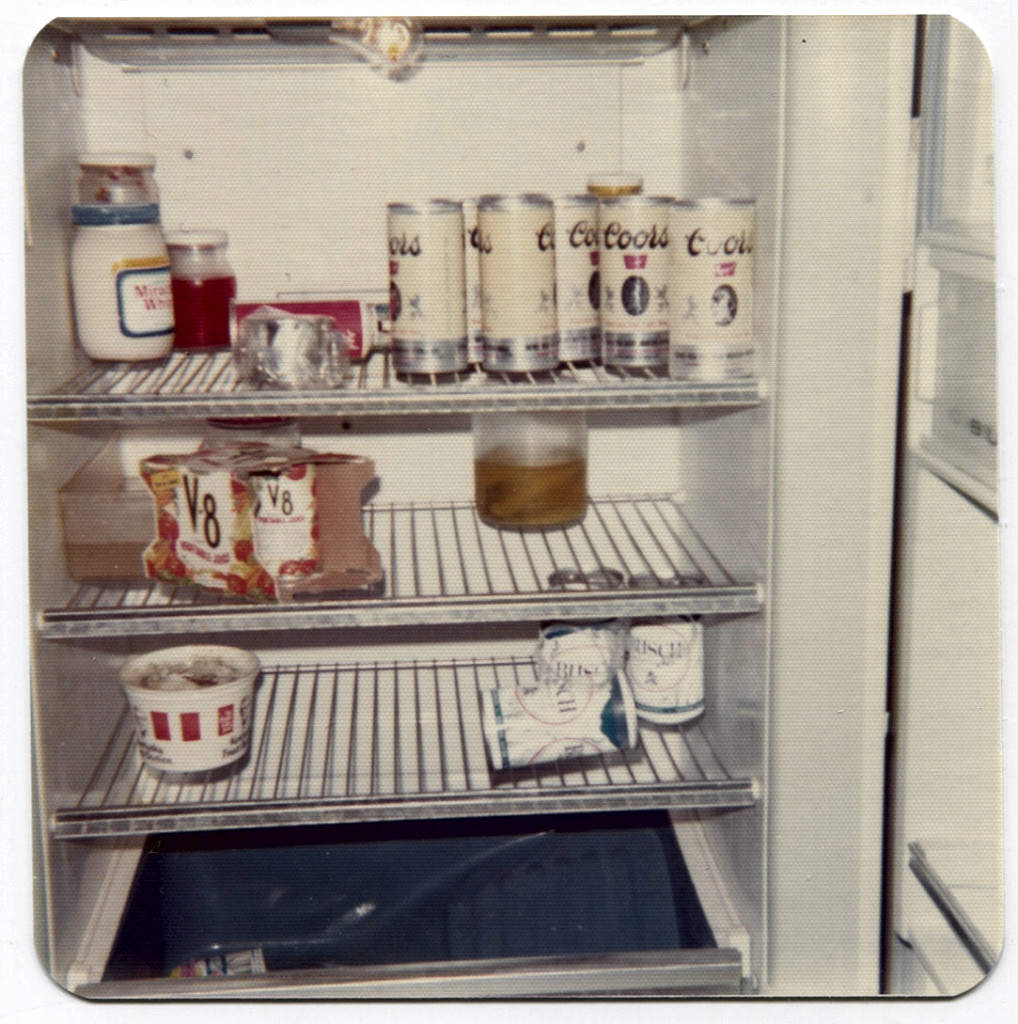
Circa 1973. Church Street, Kennett, MO
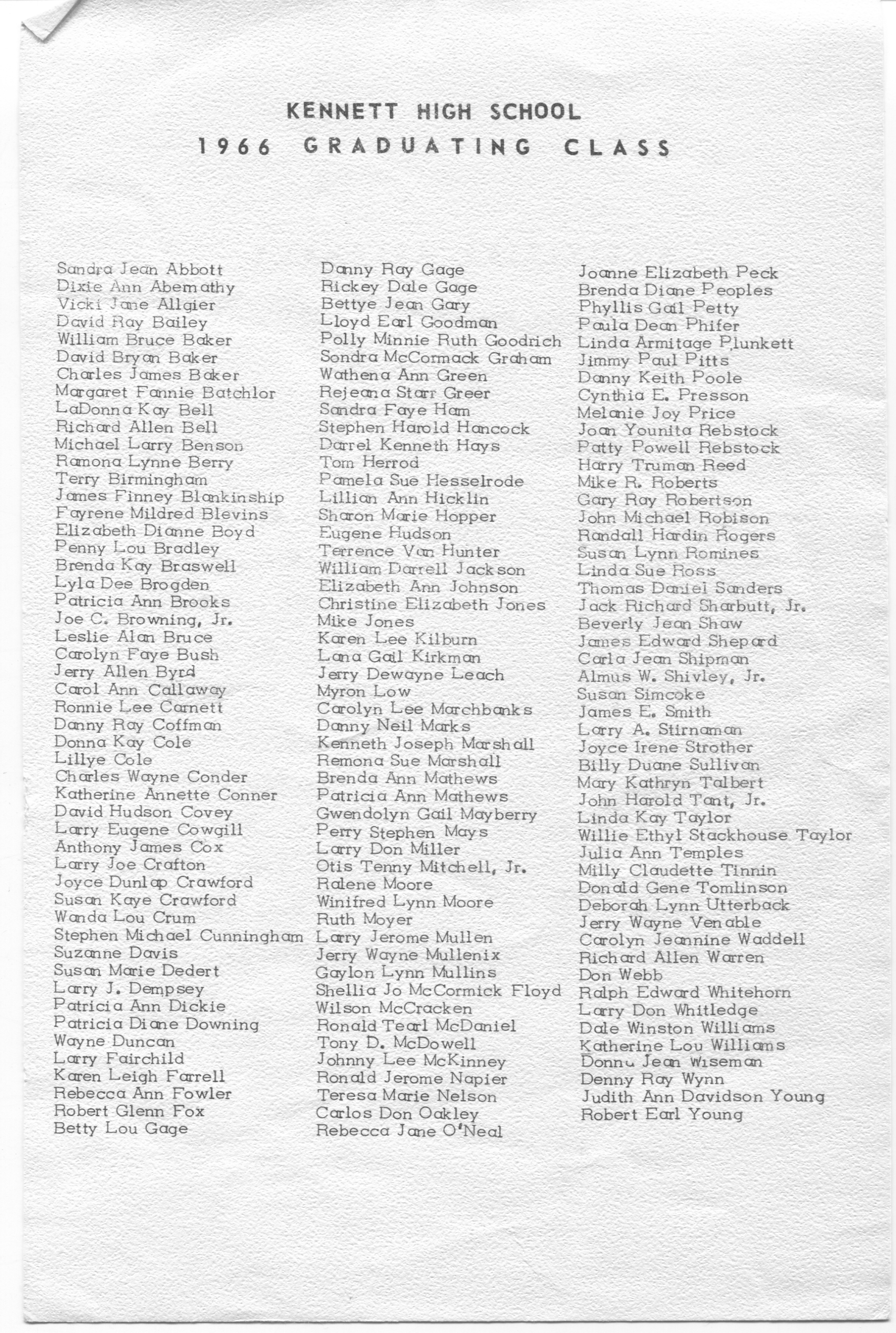
Kennett Junior High School 8th Grade Class
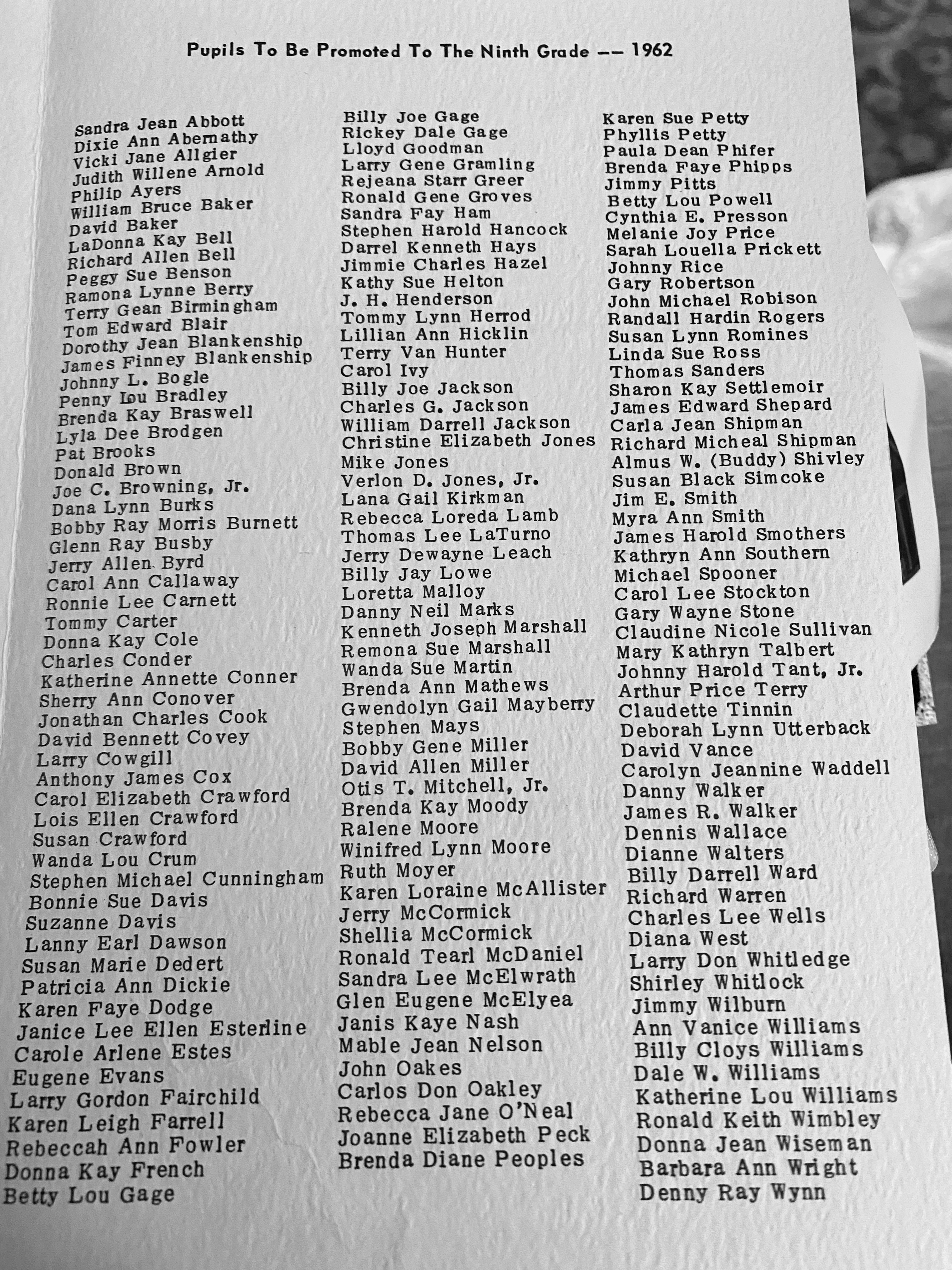
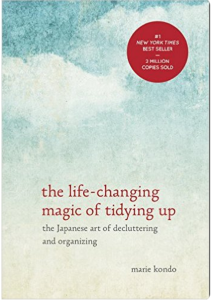 The Life-Changing Magic of Tidying Up (“The Japanese Art of Decluttering and Organizing”) by Marie Kondo. If you really, really want to declutter your life (and most people do not), this is the only book you’ll need. More philosophy than how-to and that will turn off many. And here method only works if you do exactly what she says to do, and in the order she says to do it.
The Life-Changing Magic of Tidying Up (“The Japanese Art of Decluttering and Organizing”) by Marie Kondo. If you really, really want to declutter your life (and most people do not), this is the only book you’ll need. More philosophy than how-to and that will turn off many. And here method only works if you do exactly what she says to do, and in the order she says to do it.
I’ve nearly completed her method, only photos remain and I’ll tackle those this afternoon. In the process, I have held in my hand every item I possess. That alone will frighten off most people. But I now see why she believes that is important.
If you’re tired of drowning in stuff, read this book. If not, keep swimming. A few excerpts:
Tidying: deciding whether or not to dispose of something and deciding where to put it.
When your room is clean and uncluttered, you have no choice but to examine your inner state.
Tidying is just a tool, not the final destination. Putting things away creates the illusion that the clutter problem has been solved. But sooner or later, all storage units are full. This is why tidying must start with discarding.
People who can’t stay tidy can be categorized into just three types: “can’t-throw-it-away” type; “can’t-put-it-back” type; and the “first-two-combined” type.
You only have to experience a state of perfect order once to be able to maintain it. Examine each item you own, decide whether you want to keep or discard it, and then choose where to put what you keep. […] You only have to decide where to put things once.
Discard things when they cease being functional. Discard things that are out of date.
Take each item in one’s hand and ask: “Does this spark joy?” If it does, keep it. If not, dispose of it. […] You must take each (item) in your hand.
Always think in terms of category, not place. (Don’t organize by room!)
In addition to the physical value of things, there are three other factors that add value to our belongings: function, information, and emotional attachment.
Start with clothes, then move on to books, papers, komono (miscellany), and finally things with sentimental value.
Put all your clothes in one heap, take them in your hand one by one, and ask yourself quietly, “Does this spark joy?”
There are two storage methods for cloths: one is to put them on hangers and hang from a rod and the other is to fold them and put them away in drawers.
Store things standing up rather than laid flat. […] Never ball up your socks.
Remove all books from your bookcases. You cannot judge whether or not a book really grabs you when it’s still on the shelf.
The problem with books that we intend to read sometime is that they are far harder to part with than the ones we have already read. […] “Sometime” never comes. You may have wanted to read it when you bought it, but if you haven’t read it by now, the book’s purpose was to teach you that you didn’t need it.
My basic principle for sorting papers is to throw them all away.
People never retrieve the boxes they send “home.” Once sent, they will never again be opened.
If you just stow things away in a drawer or cardboard box, before you realize it, your past will become a weight that holds you back and keep you from living in the here and now.
The reason every item must have a designated place is because the existence of an item without a home multiplies the chances that your space will become cluttered again. […] The essence of effective storage is this: designate a spot for every last thing you own.
There are only two ways of categorizing belongings: by type of item and by person. [page 138]
Clutter has only two possible causes: too much effort is required to put things away or it is unclear where things belong.
Keep everything out of the bath or shower. Whatever is used in the bath should be dried after use.
A deluge of information whenever you open a closet door makes a room feel “noisy.” […] By eliminating excess visual information that doesn’t inspire joy, you can make your space much more peaceful and comfortable.
At their core, the things we really like do not change over time. Putting your house in order is a great way to discover what they are.
When we really delve into the reasons for why we can’t let something go, there are only two: an attachment to the past or a fear for the future.
The question of what you want to own is actually the question of how you want to live your life. […] The best way to find out what we really need is to get rid of what we don’t. […] Selecting and discarding one’s possessions is a continuous process of making decisions based on one’s own values.
A few excerpts from a fascinating article by Rebecca Lemon in The Hedgehog Review:
Almost daily, we encounter people who are there but not there, flickering in and out of what we think of as presence. A growing body of research explores the question of how users interact with their gadgets and media outlets, and how in turn these interactions transform social relationships. The defining feature of this heavily mediated reality is our presence “elsewhere,” a removal of at least part of our conscious awareness from wherever our bodies happen to be.
I recently spent 90 minutes in a video Hangout with +Steve Brown. He was in Tucson and I was here in Jefferson City, MO in a coffee shop. That’s were our respective bodies were but I’m not sure where my awareness or consciousness was. In the cloud? Cyberspace? Somewhere other than that coffee shop. Back to Ms. Lemon’s article:
Mark Carranza—[who] makes his living with computers—has been keeping a detailed, searchable archive of all the ideas he has had since he was 21. That was in 1984. I realize that this seems impossible. But I have seen his archive, with its million plus entries, and observed him using it… Most thoughts are tagged with date, time, and location.
“clickworkers, gold farmers, porn zappers” – Many of them based in suburban Manila in former elementary schools and other unlikely sites, the content moderators perform the unsavory job of repeatedly adjudicating whether images posted to Twitter feeds, Facebook pages, or other social networking sites are sufficiently offensive to be eliminated from view. Moderators at PCs sit at long tables for hours, an “army of workers employed to soak up the worst of humanity in order to protect the rest of us.” By some estimates, the content-moderating army is 100,000 strong, twice the size of Google’s labor pool, and many of its members have college degrees.
“An American Management Association survey found that 66 percent of US-based employers monitor the Internet use of their employees, 45 percent track employee keystrokes, and 43 percent monitor employee e-mail. UPS uses a system, Kronos, under which each of its delivery trucks is equipped with 200 sensors, which feed information back to headquarters about driving speed, seatbelt use, and delivery efficiency. Even trying to cheat the system can hurt the worker. Drivers commonly evade the seatbelt sensor by keeping the seatbelt locked but not strapping themselves in. UPS can claim higher safety compliance even though workers are actually more endangered.”